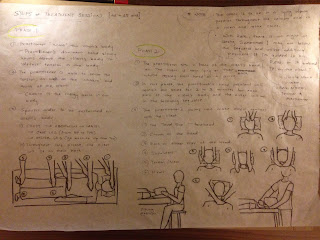Interior Design Studio 3 - Project 1
Reiki Research (5.April.2016)
Intro to Project 1:
"Develop a suitable healing treatment programme and promote using the info graphic point of communication form."
For the first part of Project 1, we were put into groups of 4 and assigned with the task of researching the type of healing treatments given to us; Reiki. We then presented our research as a group in front of our class and lecturer. The following is my part of the group work research.
General Definition of Reiki
According to my research, Reiki is a spiritual form of healing treatment that was developed in 1922 by a Japanese Buddhist by the name of Mikao Usui. Reiki is a belief or claim, therefore it is prone to bias and is not recommended to replace conventional treatment of diseases, such as cancer. Due to this, there is no solid evidence that Reiki is effective. However, some physicians say it may promote wellbeing. Reiki may be practiced by anyone and may be performed on anyone. It does not involve any special equipment whatsoever and can be performed wherever the patient feels the most comfortable and calm. Reiki is performed by the practitioner, who channels spiritual energy known as "qi", through their palms to the patient.
Phases in a full Reiki Session
The images above show my research based on a video that shows the step-by-step during a Reiki session.
Reiki should be performed by one practitioner on a single patient only, in a quiet, peaceful and comfortable space that is closed and away from any distraction. This is so that the patient will be able to relax, a state that is important for the patient to maintain during the session. One session lasts between 40 mins to 1 hour 30 mins. All this depends on the practitioner and the patient's injuries. The practitioner performs Reiki in a particular sequence with specific hand gestures. If the patient has specific injuries they wish for the practitioner to attend to, then the practitioner performs reiki on those particular areas of injury apart from the regular full body session.








































